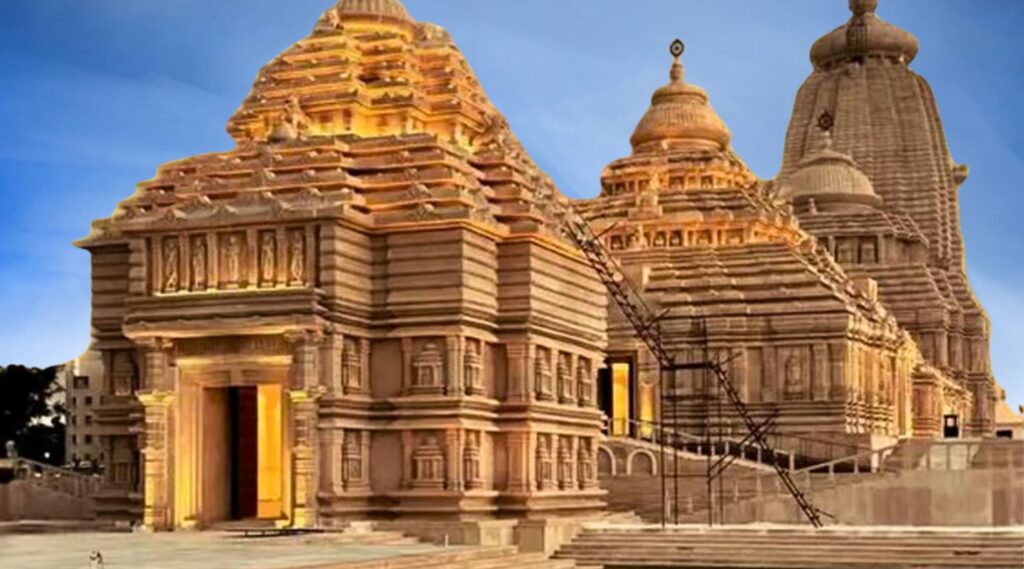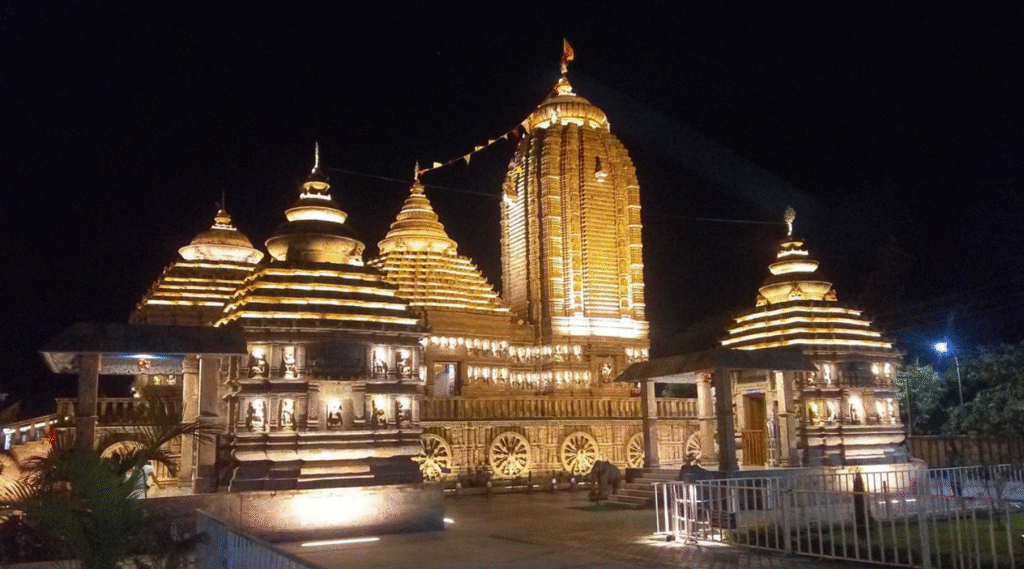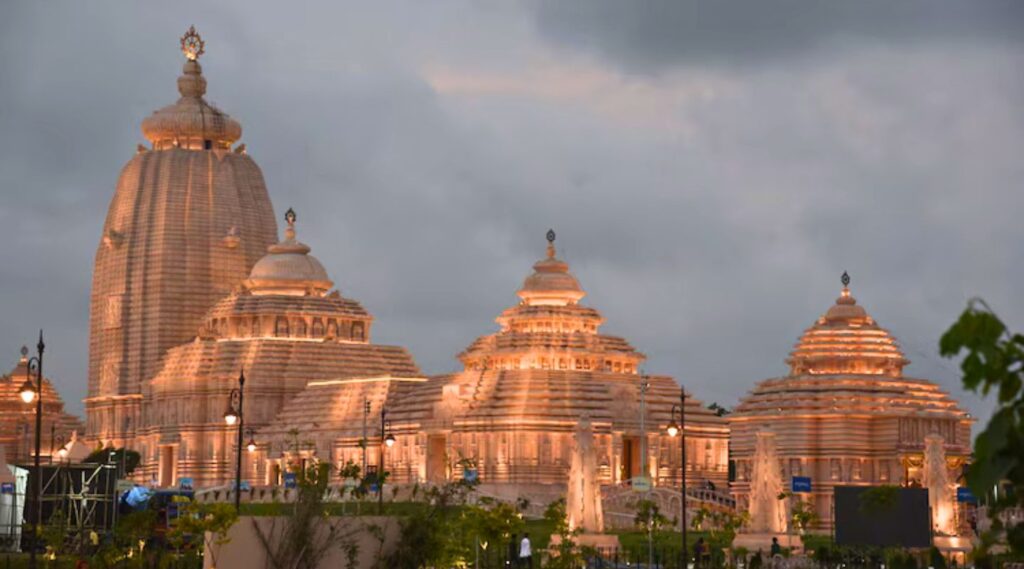
The opening of Jagannath Temple, located at Digha in West Bengal, has brought about a serious dispute between two Indian states, Odisha and West Bengal. In this clash of sister states, the centre of the conflict revolves around the term “Jagannath Dham” affixed to the newly constructed temple in Digha. This name has historically been used solely for Jagannath Temple in Puri Odisha. Talks are underway between Odisha’s Chief Minister Mohan Charan Majhi and his West Bengal counterpart Mamata Banerjee, where the former has appealed to use more civilized and appropriate words, “Dham”, claiming grave socioreligious issues arising out of it.
The Core Issue
Digha’s Jagannath Temple, which also features idols of Jagannath, Balabhadara, and Subhadra, shares architectural characteristics with Puri’s Shrine, which is over 12 centuries old. West Bengal government inaugurated Digha’s Jagannath Temple on the 30th day of April 2025. But Its later provocative designation, “Jaranath Dham”, led to strong resistance and full-blown diplomatic warfare between Odisha and Bengal.
The word “Dham” has a particular significance within Hinduism, traditionally set aside for four holy places of pilgrimage in India: Badrinath, Dwarka, Rameswaram, and Puri Jagannath Temple. The Puri temple is not just a centre of worship; it is a monument of great heritage and spirituality that resonates with the people of Odisha and millions of devotees around the globe.
Odisha’s Standpoint
In a written correspondence to Banerjee, Chief Minister Mohan Charan Majhi expressed that the title “Jagannath Dham” for the Digha temple is an insult to the devotion of the countless worshippers and undermines the culture as well as reverence of Digha and Puri’s temple. His arguments emphasise that “Jagannath Dham” is a term that has great significance and should best be left untouched with Puri, supporting his claim that usage of such names outside Puri creates a paradox which overshadows Puri’s historical and spiritual significance.
In a more detailed statement, the Odisha government clarified that “the idols at Digha were not crafted using sacred wood from the Puri temple. They only used neem wood.” This “clarification” contradicts other statements regarding the materials used and does not stem the tide of controversy. In any case, this fueled further outrage, forcing Odisha’s Law Minister Prithviraj Harichandan to publicly declare he would reach out to West Bengal, requesting the removal of “Dham” as part of all official documentation about the temple in Digha.
Cultural and Religious Dialect
As expected, the Puri Jagannath temple Chief Servitor, Ramakrishna Dasmohapatra, also offered his two cents, stating that while branches or Jagannath temples can be built everywhere, the rituals and governance of the temple in Puri cannot be disobeyed. Removing “Dham” from the Digha temple’s sign was, in his view, a justifiable action taken in favour of the divine and righteous devotees of Jagannath.
The religious fervour and a desire to protect the identity of the Puri temple motivated Puri Servitors to even go to the extent of boycotting, taking part in rites done in Digha until the use of “Dham” was resolved.
Political Elements
The quarrel has also taken on a political twist. The governing BJP of Odisha is displeased by West Bengal’s claim of “Jagannath Dham” towards the Digha temple, alleging it is an abuse of Odisha’s religious culture. BJP’s Sambit Patra has been quoted passionately saying that there is only one Jagannath Dham in the world, Puri, and no other place is entitled to that name.
Meanwhile, Mamata Banerjee and her party, TMC, have supported the temple and the naming, accusing Odisha and the BJP of being politically envious and anti-Bengali. A spokesperson from TMC argued that the right of the temple’s governance needs to be acknowledged, and issues about its rightfulness ought to be addressed by the four Shankaracharyas, the esteemed leaders of Hindus.
The Way Forward
Odisha government plans to issue a letter withdrawing their grievance and recommending that West Bengal drop the “Dham” in all official and publicity documents regarding the temple name. Additionally, Odisha’s government plans to set an SOP (Standard Operating Procedure) for servitors performing rituals outside Puri to ensure that policies and etiquette considered traditions and religious customs are observed.
The Chief Minister of Odisha has extended an appeal for cultural concern and interstate decorum, expressing hope that West Bengal will consider these matters and resolve them amicably.
The contention regarding the Digha Jagannath Temple’s name as “Jagannath Dham” reveals a deep sense of cultural and spiritual attachment to the Jagannath Temple, Puri. Puri, a city treasured by many people, will always remain the exclusive holder of the “Jagannath Dham” title.
This debate shows how complicated it can be to balance religious customs, regional identity, and sentiment. It calls for everyone involved to show more understanding and decorum toward each other. Dialogue and mutual respect will resolve the matter so devotees across different states can retain the essence of worshipping Jagannath together.
You may read this: Jagannath Temple Digha | Jagannath Dham Digha | Queries and Answers | West Bengal

